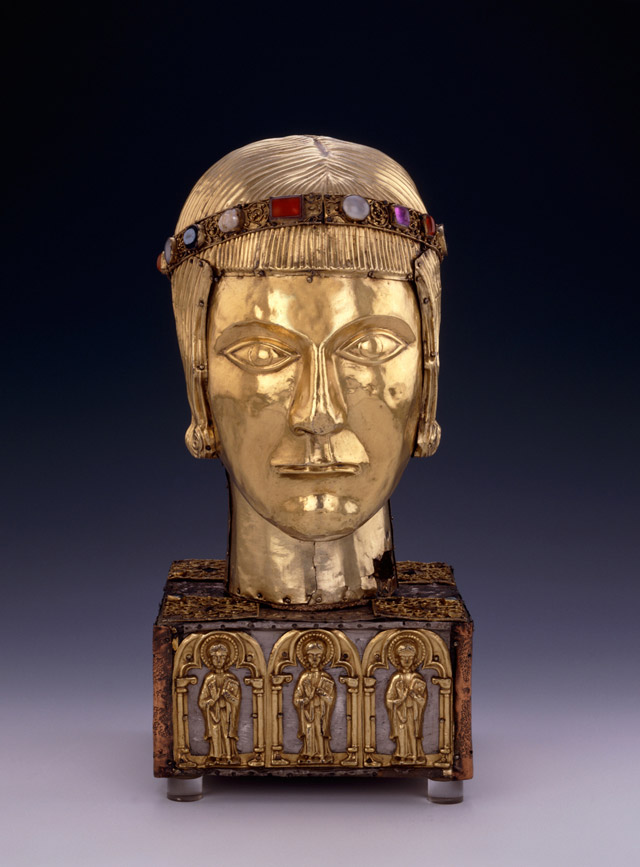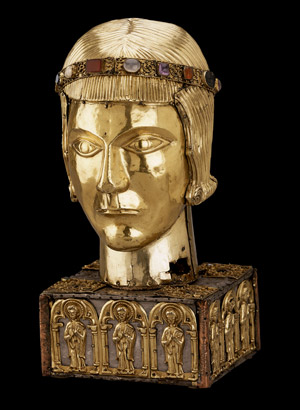Reliquary Head of St. Eustace
The British Museum, London
Copyright © The Trustees of the British Museum

 Select the image to zoom
Select the image to zoom
This head reliquary has been associated since 1477 with St. Eustace, a Roman general who, having seen a stag with an image of the Crucifixion between its antlers, converted to Christianity and was martyred for his faith; it was part of the cathedral treasury of Basel until it was sold in 1836.
Body-part reliquaries became popular in the central Middle Ages (twelfth–thirteenth centuries). Although the shape of these reliquaries might be an indication of their content, they sometimes enshrined a number of different relics. Such is the case with the Eustace head-reliquary, which contained numerous relics, including those of Eucharius, first bishop of Trier; Nicolas, bishop of Myra; Benedict, abbot of Monte Cassino, and the Holy Virgins. In 1955 the reliquary was opened and the relics were returned to Basel. The St. Eustace head is composed of a wooden (sycamore maple) core and a silver-gilt repoussé shell composed of eleven gilded silver sheets that cover the neck and head. A brow band decorated with sixteen colored stones encircles the figure's neatly parted and combed hair. The head is mounted on a base clad with silvergilt sheets and decorated with figures of the twelve Apostles standing under arches. The wooden core is also head-shaped, and has been hollowed out with a lathe. The relics were originally wrapped in precious textiles and stored in three layers. Those at the bottom comprise nine unlabeled fragments of skull, presumably the relics of St. Eustace.






